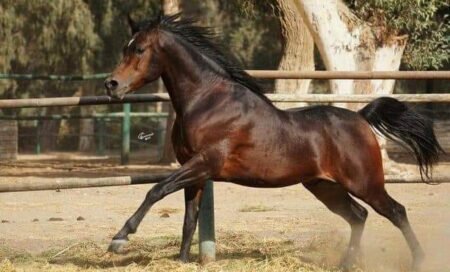It was assumed for a while among the people that the greatest strength of a horse could only be obtained by eating a large amount of coarse, nutritious food such as barley, oats, beans and processed feed.
It was believed that boiled food, barley, carrots, and some other substances cause a disinfection, that wheat straw is toxic, that chickpea pills distend the stomach, and that potatoes and many other things generate gases.

In fact, a sudden change of food causes harm, but this harm may not happen if the change is done carefully. The greatest fear of occurrence is colic and then lameness, and the viscera needs for even a short period of time in which it impresses itself with things that it was not used to use.
Young horses need more food than full-age horses, but because they are not fit for full work, there is no difference between the two cases, and horses that have begun to decline in their strength need more food than young horses and adult horses. Horses with a hot temper and irritable horses rarely eat well. Horses with small bellies and narrow chests need more food than others, but few of them eat more to continue in good condition.
Illnesses, fevers, infections, and all diseases that affect health require a reserve of food, which generally includes bran, grass, carrots, and hay. Hunger stunts growth and distorts shape. Horses that used to have little food when they were young are always small, with long legs, a weak body, and a narrow chest. Older horses whose strength has dried up due to lack of recovery need a lot of food to be in good condition, the skin of a horse that is not well fed is tense and stuck to the ribs, and the hair is dark and black as the hair of the dead.






